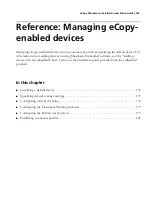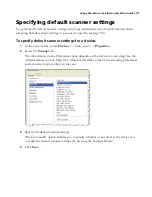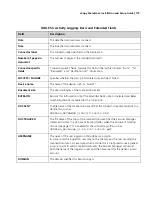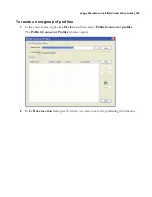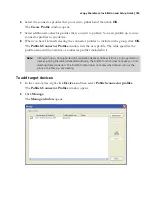
180
|
Reference: Managing eCopy-enabled devices
6
Verify that Session Logon is configured correctly:
■
In the console tree, select
System Information > Properties
.
■
Select the
Session Logon
tab.
■
Depending on the requirements of your identification device, enable or disable the
Enable Session Logon
option.
TABLE 55.
Devices: ID Service Settings
Section
Field Name
Description
ID Service
s
Enable
Enables all functions on the ID Services tab.
Port
The port number must match the TCP port configured for the
identification device. The default port is 9425.
Enable Tracing
Writes ID Service transaction information to a trace file to help with
troubleshooting. You typically only do this when you are working with
Technical Support. Enabling tracing slows down overall system
performance.
Encryption
Type
Enables encryption for your ID Service, if appropriate:
■
None: Passes credentials to ShareScan without encryption.
■
Triple DES: Enables you to encrypt the information that is sent from
the application that is supplying the credentials to ShareScan. You
do this by creating an encryption key that you store on the
computer where the Services Manager is running and on the ID
Service device.
Path
Specifies a path to the storage destination for the encryption key on the
device where the Services Manager is running.
Key
Generates the encryption key and stores it in the file:
eCopyKey.txt.
You must manually copy this file to the ID Service device. If you
regenerate the key, you must copy the new key to the ID Service device.
Important:
All devices that use ID Services and are managed by the
same Services Manager must use the same encryption key. After
generating a key for the first device, When you configure subsequent
devices you must select the same path you selected for the first device.
ShareScan automatically recognizes the key file that is already in the
storage destination.




